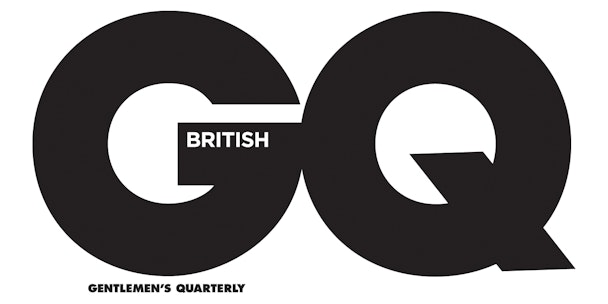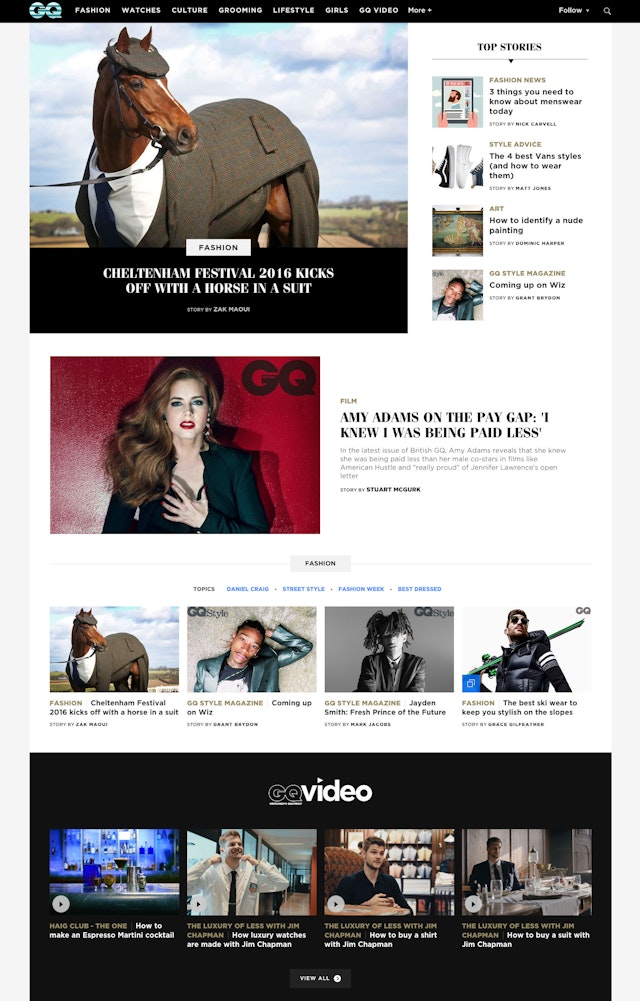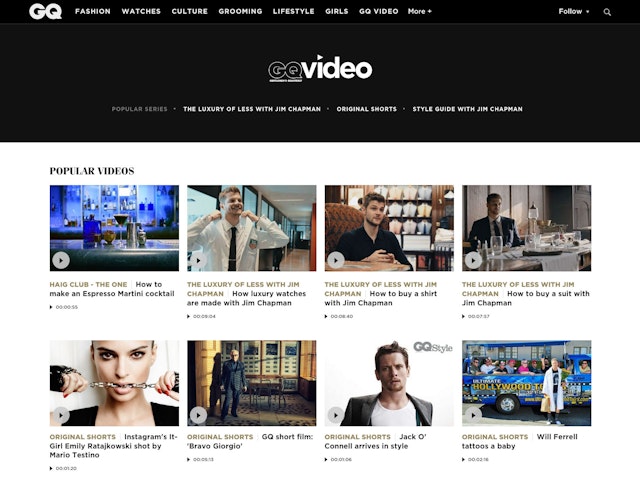GQ reimagines its website with advertisers in mind in mobile first strategy
Conde Nast’s men’s lifestyle title GQ is hoping to woo advertisers with a new mobile first strategy, a first for the business, as it attempts to create a seamless user experience across all devices.

The title has reimagined its website and developed it from mobile first through to desktop, largely as a consequence of the huge share of readership on mobile over other platforms. In fact, the media company’s first quarterly result of 2016 marked the first time that more than half of readers are on smartphone. So mobile is crucial to the Conde Nast audience.
In line with this, the new site’s offering to advertisers includes bespoke ad formats redeveloped for mobile optimization, sticky ads and lazy-load ads for better viewability, as well as greater native and custom solution capabilities.
Sticky ads and lazy-load ads only work on desktop, and work to increase viewability in alternating ways. Sticky ads work by sticking to the page as you scroll down the page. Lazy load is a parallel to that which means those ads only load when they come into view, which works well in infinite scroll, since all ads are loaded dynamically, meaning a site does not load ads you cannot see on a page.
Conde Nast has built ad formats accustomed to each of its titles, called the ‘Conde Nast responsive format’, which means brands can build ads using its bespoke ad builder tool. It creates fully responsive ads tailored to each platform, which are redeveloped for mobile optimisation, so the size and shape of the ad changes as the user switches between screens. It is an offering the media group introduced a few years ago on Vogue, and is now being pushed out across other titles including GQ in response to the increasing popularity of mobile.
It means that it’s not just the magazine’s site that is tailored for desktop, mobile and tablets, now ads are tailored accordingly too. Speaking to The Drum Wil Harris, head of digital at Conde Nast, explained why the rise of ad blocking triggered the media company to create a better offering for advertisers and users alike:
“There is a lot of talk in the industry right now about quality of ads, pop-ups, interstitials, and crappy ads turning people to ad blocking. We know that anecdotally people read Vogue as much for the ads as well as the content, so we wanted to make sure that the ads we are serving on the Vogue and GQ website are as high-quality as they can possibly be. So by designing these custom formats, it allows us to make sure that advertisers are creating ads exclusively for our title that are better than the ads that go everywhere else.”
Along with a bespoke ad offering, the revamped GQ website operates on a custom built content management system that goes hand-in-hand with the ads it serves to give the magazine “a competitive advantage”. This is being used exclusively for GQ right now, but the publisher has plans to roll it out to the other brands this year.
“There are a lot of off-the-shelf content management systems that you can buy or develop or are open-source. But we really wanted to build something bespoke that sits in our publishing workflow to make it as easy as possible for content to move between platforms whether that is print, digital, mobile.
“A really good custom content management system and platform gives us a competitive advantage - we can do things other businesses can’t do. When we talk about having high-quality responsive ads, that is only possible because it goes hand in hand with the high-quality responsive content platform that we have built.”
Quicker loading is a priority for the new website, confirms Harris, in line with the thinning attention span of readers. The system was designed from the ground up to be lightweight in terms of code, minimising the amount of third party tagging in order to shorten the page load time.
“Our goal was to get to a place where you can load on 3G in three to four seconds and we have managed to achieve that.”
Mobile optimisation to improve the speed of page loading times is an offering fronted predominantly by recently launched Google AMP. So why is the publisher not leaving page load to the experts and jumping on AMP instead?
“We are looking at all platforms, whether it’s Facebook Instant Articles or Google AMP, to see how we can take advantage of them. We are not live on any of those platforms right now but we are looking at them really closely," added Harris.

Along with streamlining the website to improve speed, the new site has reconfigured its sections, intended to enhance user engagement by allowing users to choose sections based on their own interests. To do this the magazine has built an “endless taxomany” for content, so content can be tagged with anything, and then a user can follow a tag down a rabbit hole, unveiling all the content across the site that comes under that same tag.
This is rather than traditional navigation, which breaks sections into wide sectors like Fashion, Beauty, Culture etc. The site still has those vertical sections (broad sectors), but now includes horizontal sections (specific tags) which are generated on the fly so a reader can immediately access the content they want.
While developed with user experience in mind, these horizontal sections provide a unique offering to advertisers, who can then sponsor specific content areas and topic areas rather than just sections, which can often be much more relevant to their brand.
Advertisers on the newly reimagined website include Mr Porter, John Varvatos, Tiffany Bridal, Grey Goose, Dolce & Gabanna and Burberry.
The media group publishes 10 titles across the UK online, and its goal is to have them all on a mobile-first platform by the end of this year, according to Harris.
Along with a reimagined website, the magazine also launched GQ video, which will be a home for GQ originated short films, series and documentaries, archive videos, partner collaborations and the GQ video playlist.
Harris said creating new channels for GQ is part of wider strategy for Conde Nast to "translate the editorial quality that we have in print and in digital into video".


